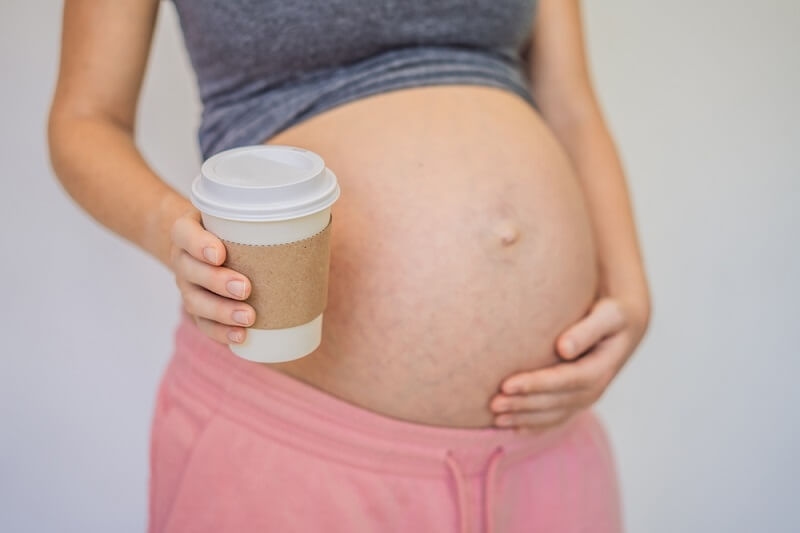
Pregnancy is a wonderful experience, yet so many myths are floating around about it, reported on the internet or through age-old tales. It is now more than ever to draw the line between facts and fiction to make the best decision at this special time of 2025. Most prospective parents become confused between facts and the myth that has been handed over through many years. The blog will reveal the pregnancy myths 2025 edition and direct you to prenatal truth based on science. Let us dispel some of the most popular misconceptions, unveil the truth about them, and allow you to know what is fact and fiction in pregnancy.
It is imperative to eat properly during pregnancy, yet when it comes to food, an endless number of myths come into being. This is what is real, and this is not.
Myth: During pregnancy, women should twice as much food intake.
Truth: This is among the most popular misconceptions. Although it fact that your calorie requirement rises, it does not imply that you should have twice as much food. The extra calories recommended by doctors during the second and third trimesters are 300-500 calories a day, not twice your usual intake.
Myth: Spicy food may damage the baby or result in death.
Truth: There exists no scientific evidence of the harmful impact that spicy food has on your pregnancy. Nevertheless, in other cases, it can lead to heartburn or indigestion. In any case, pay attention to your body; in case it does not feel good, modify it.
Myth: These are fruits that can cause miscarriage.
Truth: In moderate amounts, ripe pineapple and papaya are safe to eat. They contain essential vitamins and enzymes, but there's no evidence linking them to miscarriage when eaten in regular quantities.
There are several myths about movement and exercise during pregnancy. Let’s address what’s safe and what’s not.
Myth: Physical activity is harmful during pregnancy.
Truth: Unless advised otherwise by a doctor, mild to moderate exercise like walking, prenatal yoga, or swimming is good for both the mother and baby. It helps with blood flow, stress, and even labor preparation.
Myth: Lifting arms can wrap the umbilical cord around the baby's neck.
Truth: This old tale has no medical basis. The baby moves freely in the womb, and the cord can twist naturally. Arm movements do not influence the cord’s position.
Myth: Bed rest is required throughout pregnancy.
Truth: Rest is important, but too much of it can lead to weight gain, blood clots, and other complications. Balance is key—take breaks when tired, but keep your body gently active.

Guessing a baby’s gender is one of the most talked-about topics during pregnancy. But most gender prediction methods are more fun than factual.
Myth: If you're carrying high, it’s a girl; if low, it's a boy.
Truth: Belly shape depends on your body type, muscles, and baby’s position, not the baby’s gender.
Myth: A fast heartbeat means a girl, while a slow one means a boy.
Truth: Fetal heart rate can vary for many reasons and isn’t a reliable way to predict gender. Only medical tests, like an ultrasound or blood tests, can confirm it.
Myth: Your cravings can reveal your baby's gender.
Truth: Cravings happen due to hormonal changes and nutritional needs. There’s no link between food preferences and baby gender.
Many changes happen in a woman’s body during pregnancy. Some of these changes are misunderstood due to myths.
Myth: Glowing skin is a sign you're having a boy.
Truth: "Pregnancy glow" comes from increased blood flow and hormone levels, not the baby’s gender. Some women experience glowing skin, while others may have acne or pigmentation.
Myth: Using lotions and oils will stop stretch marks.
Truth: While moisturizing helps with skin elasticity, stretch marks mostly depend on genetics. Creams can reduce discomfort and improve appearance, but they can’t guarantee prevention.
Technology in prenatal care has improved a lot, yet myths still confuse expecting mothers.
Myth: Too many ultrasounds can harm the baby.
Truth: Ultrasounds use sound waves and are considered safe. They help monitor the baby's growth and health. Doctors only recommend as many as needed.
Myth: Vaccines can harm the baby.
Truth: Vaccines like the flu shot or Tdap are recommended during pregnancy. They protect the mother and the baby from infections.
Myth: Nausea only happens in the morning.
Truth: “Morning sickness” is a misnomer. Nausea can occur at any time of day, especially in the first trimester.
Labor is often portrayed as scary or unpredictable. Let’s separate the myths from prenatal truth here.
Myth: More babies are born during a full moon.
Truth: Studies show no connection between the lunar cycle and labor. It's a fun idea, but not based on science.
Myth: First-time moms will always have a very long labor.
Truth: Labor varies from woman to woman. Some first-time mothers have quick deliveries, while others may take longer. There’s no set rule.
After delivery, new mothers are surrounded by advice—some helpful, some not.
Myth: You’ll return to your pre-pregnancy weight just by breastfeeding.
Truth: While breastfeeding burns calories, weight loss depends on diet, activity, and genetics. Breastfeeding helps, but it’s not magic.
Myth: Bathing after childbirth is bad for health.
Truth: This outdated belief still exists in some places. Good hygiene is important during recovery. New mothers can shower safely unless the doctor advises otherwise for medical reasons.
In 2025, it's time to let go of fear and misinformation and embrace evidence-based pregnancy care. Whether you're navigating food choices, planning workouts, or preparing for delivery, knowing the difference between facts vs fiction gives you the power to enjoy a healthier, happier pregnancy.
Knowing the facts regarding the pregnancy myths 2025 is what would bring clarity to many new mothers during the phase of transition phase. We have busted these myths and hope that they make you more prepared and less anxious about this incredible adventure of yours. Bear this in mind--knowledge is power, when it is the power of truth. This, then, is your key to being informed, empowered, and myth-free.
This content was created by AI